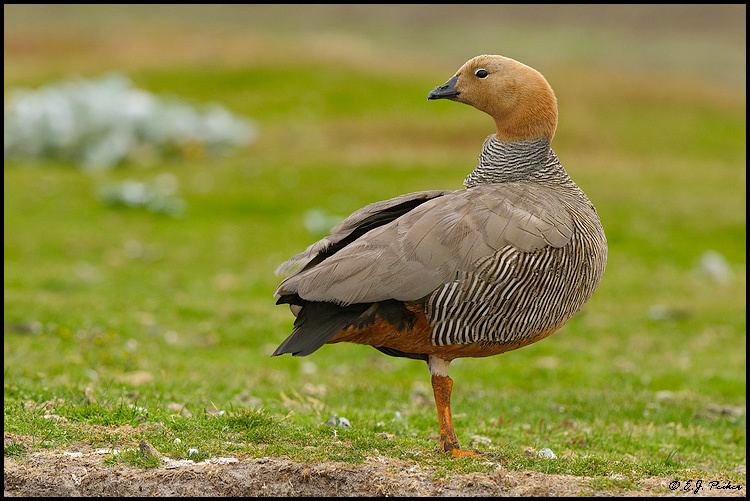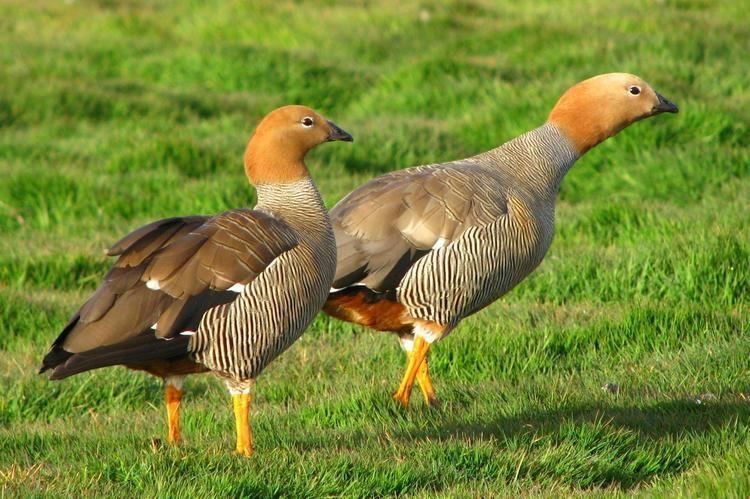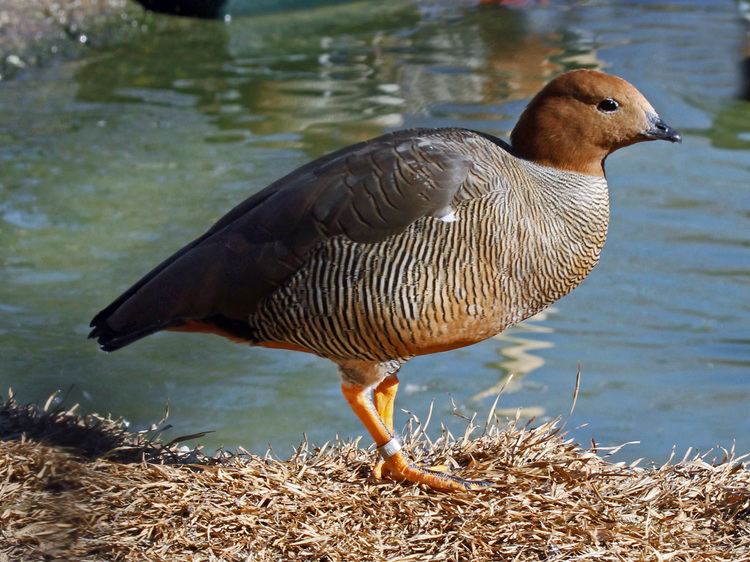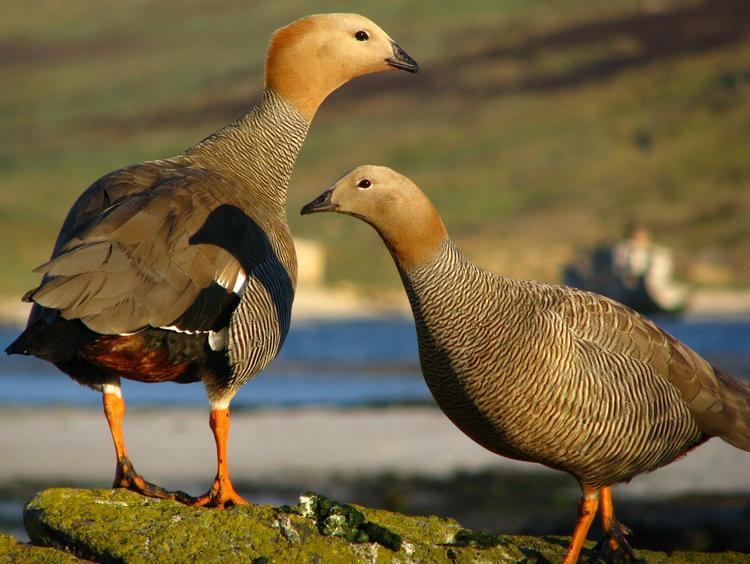Subfamily Tadorninae Scientific name Chloephaga rubidiceps Higher classification Sheldgoose | Genus Chloephaga Phylum Chordata Rank Species | |
 | ||
Similar Sheldgoose, Ashy‑headed goose, Upland goose, Bird, Kelp goose | ||
The ruddy-headed goose (Chloephaga rubidiceps) is a large sheldgoose, which breeds in southernmost South America.
It breeds on open grassy plains in Tierra del Fuego, Chile and the Falkland Islands. The South American birds are now very rare. They winter on lowlands in southern Argentina, some distance north of the breeding range. The Falklands population is resident.

The lined nest is built amongst grass tussocks, and 4-11 eggs are laid. This terrestrial species favours damp upland forest clearings and feeds by grazing; it rarely swims. It forms flocks outside the breeding season, often mixed with ashy-headed goose.

Ruddy-headed goose is a stocky 45–50 cm bird with a pale grey back, and black-barred rich buff underparts. The head and upper neck are chestnut brown. Sexes are similar, but immature birds are duller.

In flight this species shows black primaries, with the rest of the wing white except for a broad green bar. The male's call is a soft whistle, and the female's is a harsh cackle.

This species remains numerous in the Falklands, despite competition from grazing cattle and sheep, but the South American population in Tierra del Fuego has been reduced to a few hundred birds not only by livestock farming, but especially predation by the South American gray fox, which was introduced to Tierra del Fuego in the 1950s to control rabbits.

Conservation

Under the auspices of the Convention on Migratory Species of Wild Animals (CMS), also known as the Bonn Convention, the Memorandum of Understanding (MoU) concerning conservation measures for the ruddy-headed goose was concluded and came into effect on 21 November 2006.
The continental population of the ruddy-headed goose is migratory and is in imminent danger of extinction because of the small size of its population, its restricted area of distribution, and the numerous threats which it faces in its breeding grounds in the continental area of the Magallenes region (Chile), in the north of the Tierra de Fuego (Argentina and Chile) and in the wintering grounds in the South of Buenos Aires province (Argentina). Therefore, the MoU aims to safeguard the mainland population of this species, which is in serious danger of extinction.
